NeXT
Veteran Member

My mission going into this project was to make the machine complete. Not perfect. Just complete. For a period of time I was literally looking at a pile of mac II era hardware for a reasonably good price, like it-all-cost-me-under-$100 good. This was the result of a lot of effort.
Mac collectors like to cherish some of Apple's most memorable products, notably the Mac 128. Sure, that's a cool machine but it's useless. Without finding expensive upgrades it's a memory crippled machine, plus if you have an SE/30, you have the only compact mac you'll need as it does basically everything. For me that applies to the IIfx. It was fast. It was expandable and it had that amazing Snow White Design Language to it. In fact, all its peripherals followed the SWDL. When brought together it looks really nice.
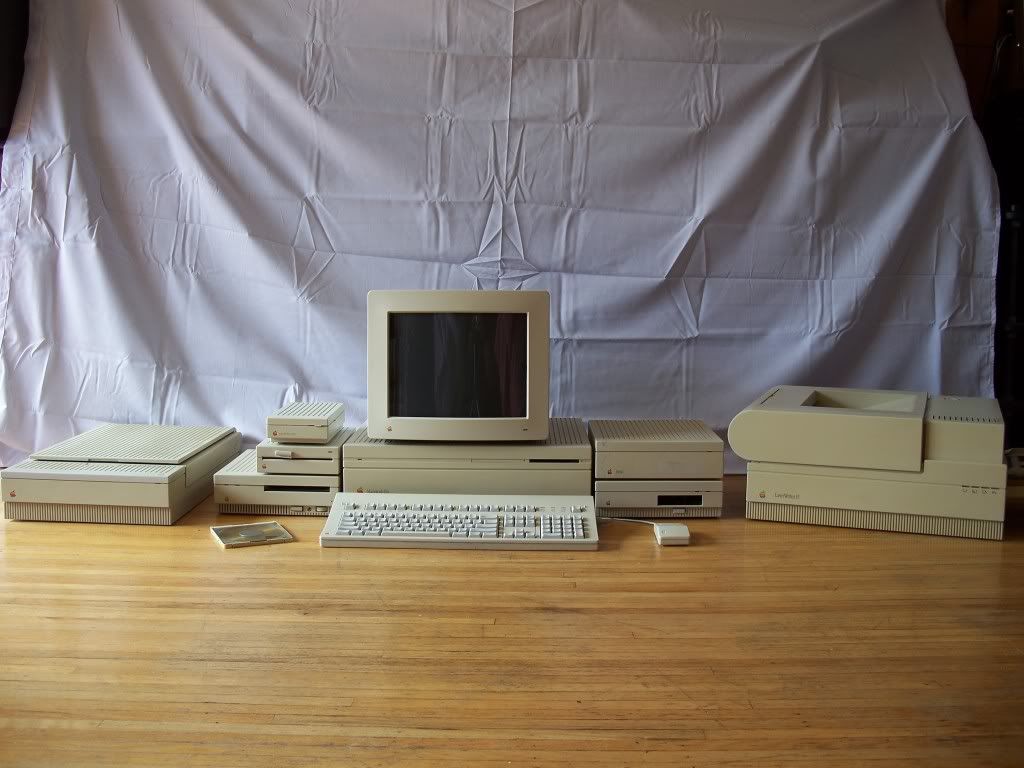
It all started when I discovered the computer at Vancouver's FreeGeek. It had already been processed and the various components such as the case, logic board, ram and CPU were now scattered around the warehouse in various bins. It took a good two hours to recover and reinstall everything back into the undamaged case. The only exception was the power supply which was strangely missing. Regardless, it all cost me a good $15. I was able to source a replacement power supply from a much worse condition Macintosh IIx which even without a PSU I was able to sell off and cover the cost of the IIfx. From there because of previous acquisitions I was sitting on a large number of NuBus cards and disks The system was then built like so:
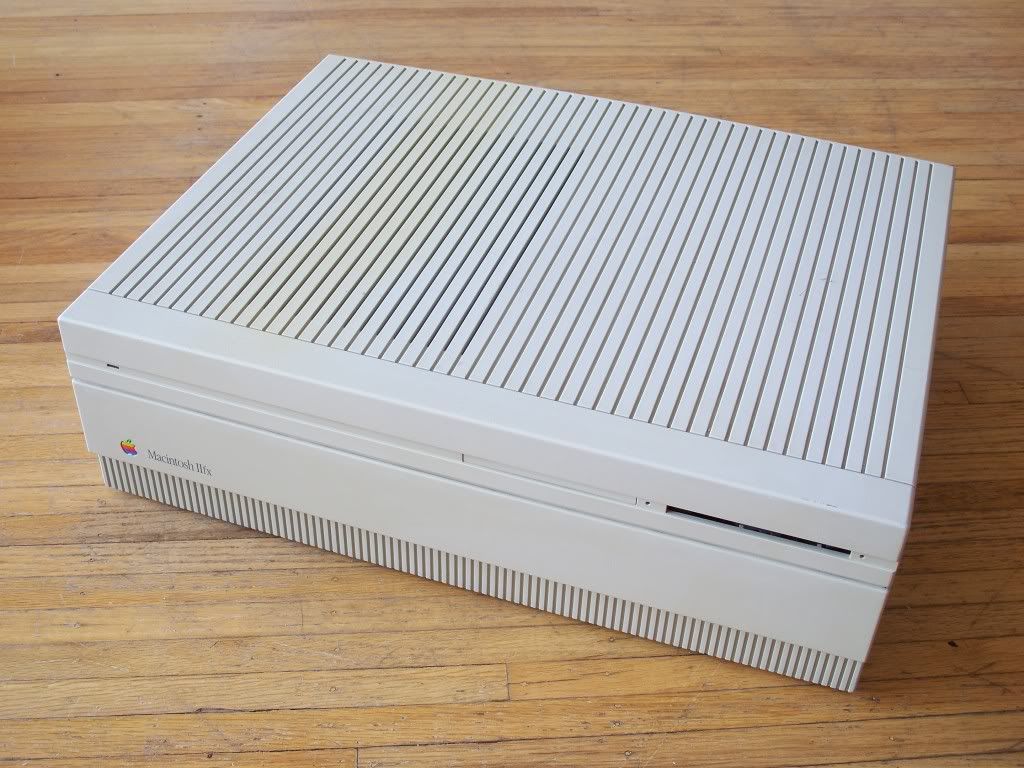
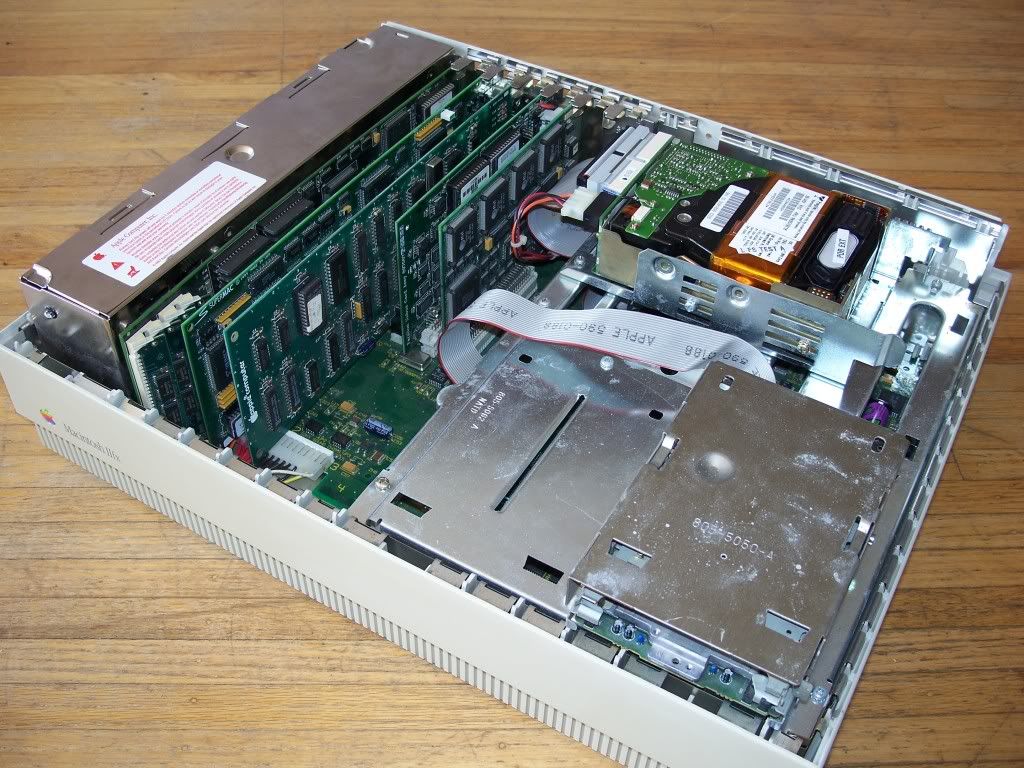
Hard Drive: IBM 0663-E12 1043mb SCSI Disk Drive (FWB Toolkit formatted, running System 7.1)
Video: RasterOps 24 XLi
Capture: Supermac VideoSpigot I
Floppy: Apple 5.25" PC Floppy Drive Controller
Network: Farallon Nubus Ethernet Adapter (sporting rear connections for thin Net, AUI, and Category 5)
Acceleration: Radius PhotoEngine (DSP acceleration for Adobe Photoshop)
I left the second floppy drive slot unused simply because I don't need a second floppy drive. If you got a hard drive, two floppy drives are redundant. I also left one NuBus slot open for further expansion either with a NuBus card or the off chance an accelerator for the IIfx's PDS slot is found. I might also just change out the VideoSpigot for a nice Avid NuVista+ with the JPEG compression expansion which requires two slots.
The only major part of the machine that is hurting for expansion is ram. IIfx ram has always been EXTREMELY expensive. Even for me to go to 16mb from the stock 8mb is in the range of $100 so for now I will have to shuffle extensions around in system 7 so that I'm not running out of memory all the time. Unfortunately you cannot use Ram Doubler with the G-world ram on the RasterOps card, or in parallel with the PhotoEngine extension. There's no avoiding it.
Now for the peripherals. This was a fun couple of years. Originally ist started with a tape drive, then mushroomed out in 2011.

Apple's Tape Backup 40SC is a rebadged 40mb 3M tape mechanism. It was an early ebay buy with a copy of A/UX 1.1. Here it is with my first Mac II, a Macintosh II. Regrettably I had not yet known of the problems surrounding decaying pinch rollers in QIC drives yet and the tape was slightly gunked up (I don't think it ever got on the tape itself, just the plastic roller friction surface directly above the tape took the direct hit). Even after the drive was repaired I was personally never able to recover the contents of the tape, possibly because of a poor use of reinforced tubing for the job, or god knows what. In the end that tape was traded away to be archived in exchange for the famous NeXT Poster. The drive comes bundled with a small utility form Apple. Cute but for me at least there's no use for such a drive anymore, especially since QIC tapes at this point in time are all effectively junk.
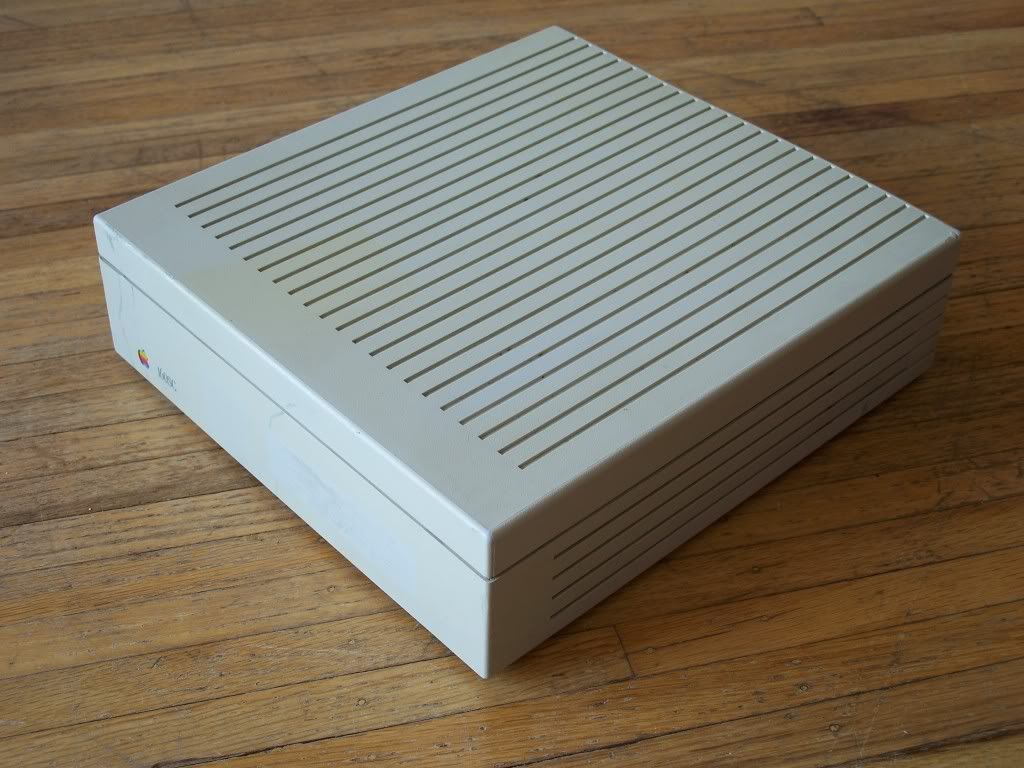
Apple's external hard disks are pretty common since they sold them for use with everything. This particular drive is rated for 160mb using a godawful Quantum hard drive with stiction. I could never get that drive to reliably work so it was replaced with a 500mb Seagate and formatted using a modified version of Apple's Drive Setup utility.
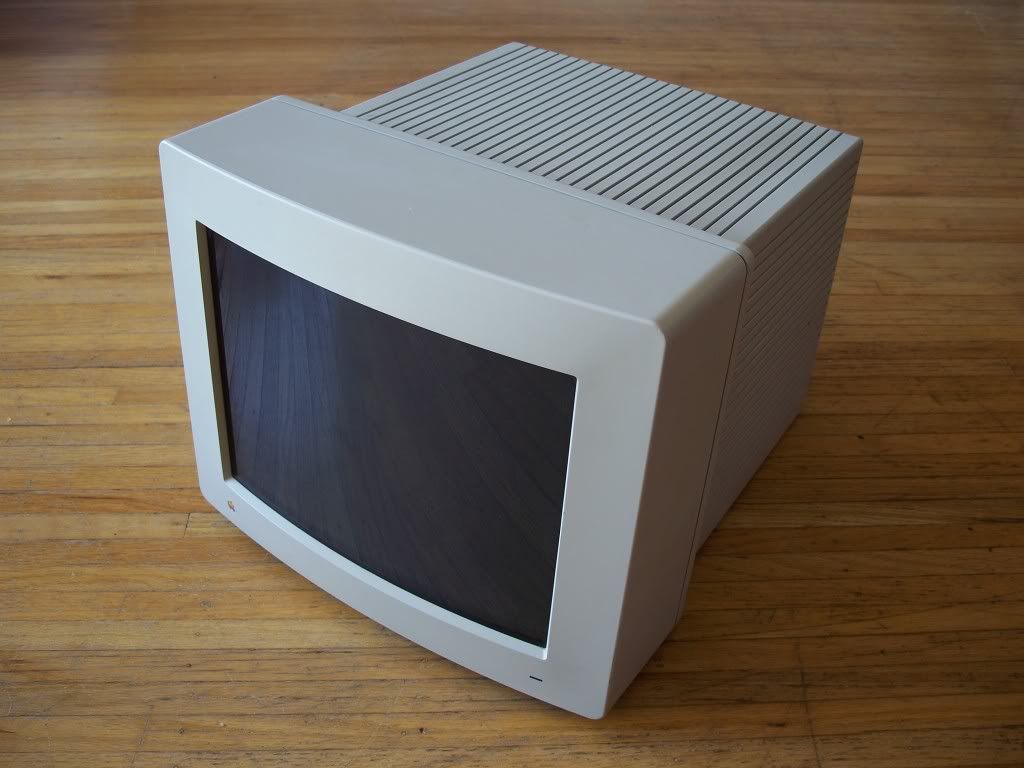
Apple sold the Macintosh II line with a rather nice 13" High-Resolution monitor. It's fixed t 640x480 with a refresh of 66.7hz. It clearly uses a Sony Trinitron picture tube which is always a plus compared to the other CRT technologies at the time. The back of the monitor has a handy degauss button and normally they didn't sell with a stand. You just placed it on your mac and you were good. I have no complaints for this monitor. It's rock solid.

Apple sold a number of scanners but the OneScanner was their first. It was SCSI interfaced and supported 256 levels of greyscale. Apple supplied their own scanning application but support was later added for Adobe Photoshop. The lamp in this particular scanner is green however I have heard rumors that they also used red lamps.
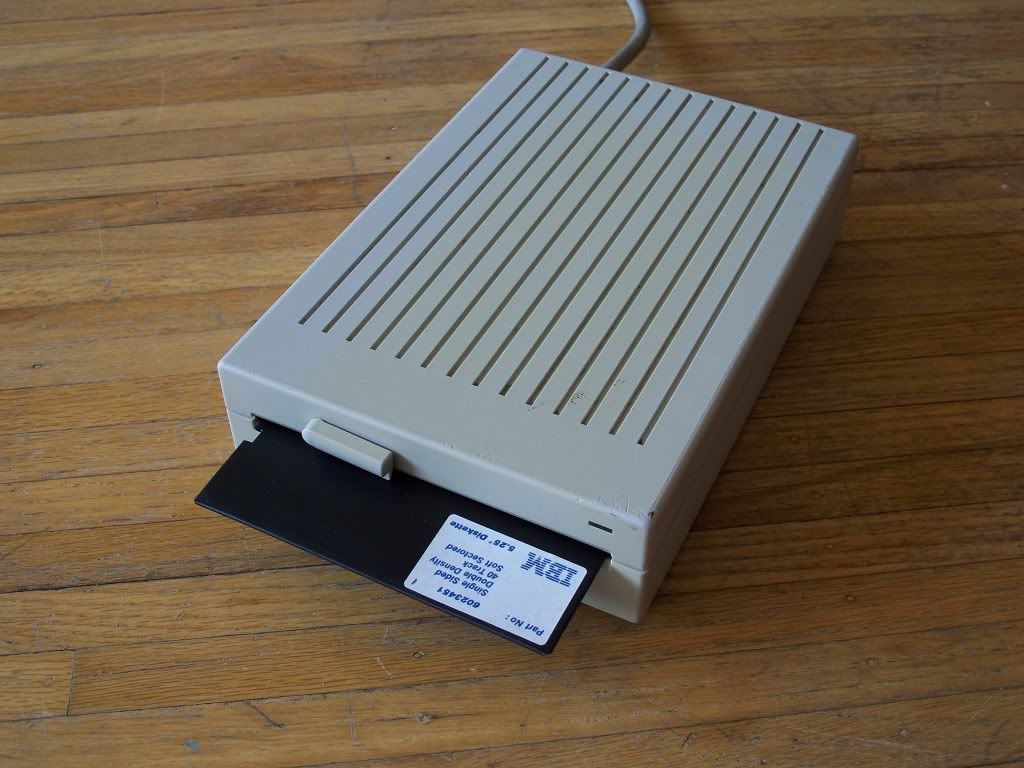
When used in tandem with Apple's 5.25" controller card the Apple 5.25" drive could read and write FAT formatted 5.25" floppy disks up to 360kb in size. There's no magic inside the drive itself. It is powered and is completely controlled by the card which was available either in NuBus format or SE PDS. It used Apple File Exchange among other programs to operate and did not magically appear on your desktop.
>>IMAGE<<
I had forgotten that Apple also sold modems. The Data Modem 2400 was a Hayes comnpatible 300/1200/2400 baud modem with a serial passthrough so you were not completely losing a serial port to the modem. Mine unfortunately does not have its power supply. Perhaps one day I'll look into making a replacement adapter.
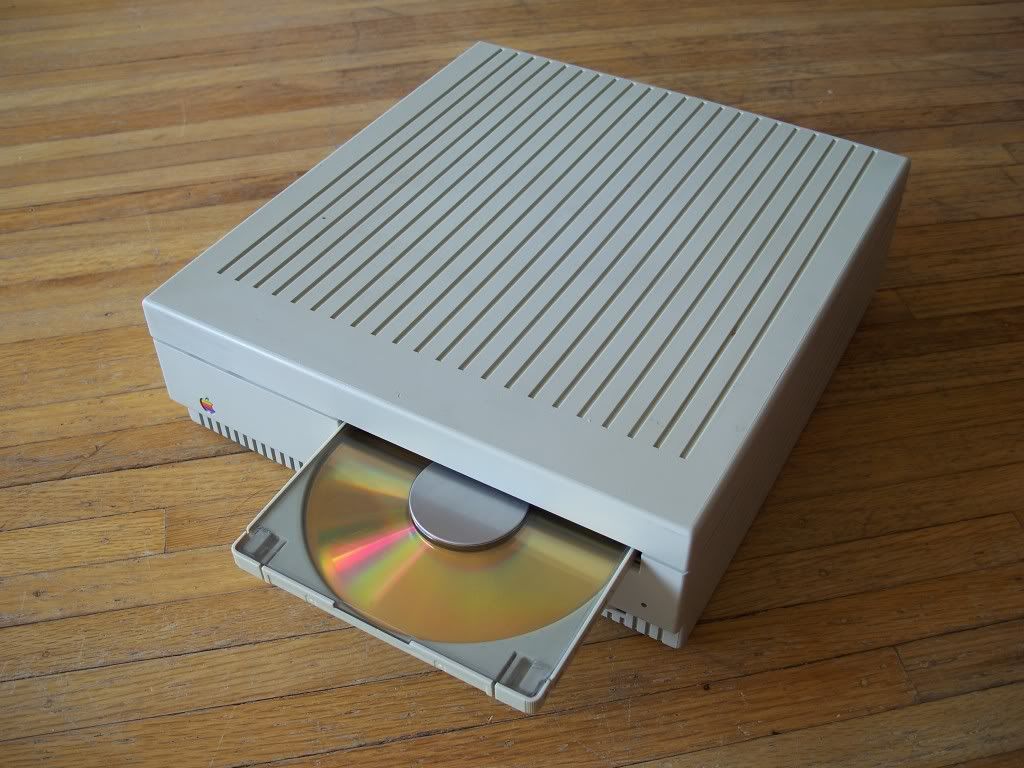
This is Apple's first marketed CD drive. The Apple CD SC. Internally it's a rather early Sony CD-ROM drive. As with CD drives at the time is used a CD Caddy to hold the disc itself. It's not a fast drive either at 150k/second but that's effectively the original 1X speed. Games that load off the CD like Myst or The Journeyman Project do so rather slowly. Installing Adobe Photoshop was painful. Unfortunately as with most Sony devices it used surface mount capacitors. While dhe drive operated with minimal issues win 2011 it finally stopped reading in 2013. A complete recap however will restore it.
>>IMAGE<<
Apple's laser printer at the time was the Laser Writer II. Like almost everything at the time they used the SWDL here as well. Mine is fitted with the IIg print engine. It could be interfaced through serial or ethernet. It also included a SCSI port so you could plug another HD SC drive in to locally store fonts and spool documents if the printer was used in a LAN.
Unfortunately it too has problems. It never wanted to behave. Surface mount capacitors are one known issue however it seems form time to time people have issues with the power supply. It's not a priority for me as I network print to an HP LaserWriter 4M Plus.
>>IMAGE<<
Apple also decided the poke at the MIDI market. and as such sold their own MIDI interface that plugged into a serial port. That I'm aware of they never sold their own software for the adapter but the serial to MIDI interface was already a standard so almost all the MIDI packages supported it.
>>IMAGE<<
Finally we have LocalTalk. In this particular machine while it's fun to keep the transceiver hanging out the back it's completely redundant thanks to the Farallon network card.
Overall the machine and all the peripherals are well built. I really do like this machine, even though it has a flaw or two.
